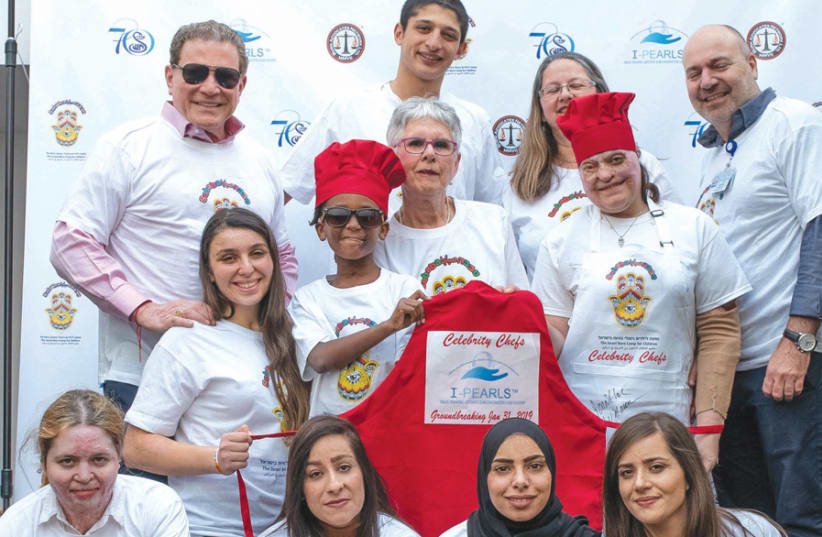The most common children’s injury in Israel’s winter months: burns. Thousands of children are rushed each year to hospital emergency rooms due to burns.
Health Ministry statistics show that in 2015, more than 3,000 children came to emergency rooms and Terem clinics suffering from burns. Many other burn incidents go unreported.
These injuries strike children from every sector of society – caused by terrorist attacks, cooking-related scalding, Sabbath and festival candles (especially in the Orthodox community), and open flames and heaters (especially among the Bedouin and Druze).
“It is better to prevent burns than to treat them,” said Prof. Josef Haik, director of the National Burn Center at Sheba Medical Center, but that is not always possible
SOON THERE will be new hope for child burn victims, with the opening of the Israel Pediatric Aesthetic and Reconstructive Laser Surgery Center of Excellence (I-PEARLS), which will be directed by Haik on the Sheba campus. The facility will offer state-of–the-art laser therapy to every child in Israel without regard to their nationality, religion or ability to pay.
The I-PEARL groundbreaking ceremony took place on January 31, but the groundwork for the center was laid many years before by Samuel Davis, president and founder of the US-headquartered Burn Advocates Network, which is partnering with Sheba on I-PEARLS.
In 2007, Davis had a dream of starting a nonprofit organization that would help transform the lives of young burn survivors.
“Burn Advocates Network Ltd. was founded to bring psycho-social healing in countries lacking the resources that we take for granted in the US,” Davis explained.
Since then, he has opened “burn camps” in Israel, India and Brazil, helping hundreds of children rebuild the shattered self-image that almost always accompanies serious burns.
A few years ago, Davis was approached by a 16-year-old camper at Israel’s burn camp, Camp Sababa in Kfar Galim, who said she could not get a date because of her scar. Davis was so moved by the child’s plea for help in minimizing the raised and hyper-pigmented scars on her face, that he researched what options might be available to her in Israel.
“Only months before, I had attended a lecture at Massachusetts General Hospital where the speakers described how they were using lasers – not just any lasers, Israeli lasers,” he said. “I was shocked to learn that lasers were not being used to treat disfiguring scars on children in the very country that developed and manufactures them. I could not understand why Israeli kids did not have that choice.”
Davis reached out to Haik; the rest is history.
Haik said that today’s highly sophisticated laser technology is able to “change the function and the aesthetic appearance of the scar.”
This new generation of lasers, Co2 ablative lasers, have the capacity to penetrate the thickest raised scars and make them softer and suppler. The vascular laser reduces discoloration and abnormalities caused by burns and the non-ablative laser safely treats atrophic scars.
Haik designed and led the effort to build the advanced, $50 million hi-tech burn center at Sheba, which has been designated as Israel’s national burn center. Now he will serve as director of this pediatric burn center, too. In this new role, Haik will oversee the clinical operations and the training of plastic surgeons and dermatologists in the use of lasers for children with burn scars and other cosmetic and functional deficits.
The first patients will be Camp Sababa campers.
“We give kids with burn scars a unique experience, the experience of being in a place where they can simultaneously heal and make friends, where they are not judged by their scars and have the opportunity to talk about what it is like with people who understand,” Davis said of his camp. “In burn camps, we want to restore their spirits. With the lasers, we want to make their scars look better and feel better.”
Patients will include those like Noa (name changed), who was born in Israel to Eritrean parents who entered Israel illegally from the Egyptian border. At the age of 18 months, she accidentally drank a very strong cleaning acid. She was transported to the hospital in critical condition with burns to her mouth, vocal chords, esophagus and trachea. She also sustained third-degree burns on her face.
Noa was hospitalized for six months, mainly in intensive care, enduring multiple surgeries.
During the hospitalization time, her parents visited her rarely and the hospital contacted Social Services. Ultimately, she was transferred to a foster family.
Her foster parents asked about the possibility for plastic treatment for the scars on Noa’s face. They were told that it would be possible to do revision surgery, but even then, cutting out the scar tissue posed serious risks.
The parents accepted this fate until they were introduced to Haik. After a meeting, Noa was scheduled to undergo laser treatment.
“Dozens of our campers and thousands of other children in Israel will have life-changing benefits from laser surgery,” Davis said, noting that the treatment is covered by National Insurance. “I said, let’s create this as a flagship program, an example of what can be done with well-trained surgeons and dermatologists – not only to change the way children look – and that is important – but to change the way their scars feel.”
I-PEARLS will likewise be a teaching hospital to train the use of these lasers to doctors from other hospital across Israel and from around the world. The center is already using some lasers now, as it builds itself out to completion.
“I call Sheba the tikkun olam capital of Israel,” said Davis. “Sheba, under Haik, will be responsible for Israel becoming a leader again in medical lasers – this time for children.”
